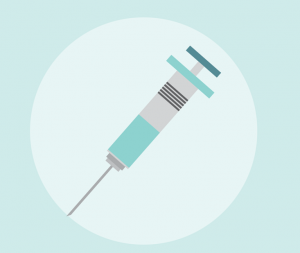News briefs
2020 has been a rollercoaster with many unforeseen twists and turns. Here are some important events to keep your eye on as the year draws to a close.
December 20, 2020
A Tale of Two Vaccines
Multiple pharmaceutical companies are competing to gain approval for their COVID-19 vaccines as the pandemic worsens across the country and around the world. Two of the current leading drugmakers in the U.S., Moderna and Pfizer, have both shown promising results during clinical and preclinical trials and are working to gain Food and Drug Administration approval for early, limited use. Problems with transportation and storage, however, play a critical role in vaccine availability to Americans. Despite the expected production of 70 million doses by the end of December, the initial batch of vaccines will likely be reserved for high-risk populations. This population comprises those in the medical field and vulnerable groups including teachers, according to the New York Times.
Regional Rising Rates
The increasing number of new COVID-19 cases and deaths in Iowa reflects the severity of the pandemic’s toll on the U.S. as a whole. As of Dec. 8, 17.1% of COVID-19 tests in Iowa were positive, making it the state with the third-highest positivity rate, according to The New York Times. As the number of cases skyrockets, many hospitals in Des Moines already have intensive care units at maximum capacity. Meanwhile, some rural cities lack these resources and rely on make-shift units instead. A New York Times report found that patients at the University of Iowa Hospitals & Clinics have been turned away not only due to P.P.E. shortages but a low bed supply as well.
The Shift to Online
The ICCSD school board voted for hybrid students to transition back to fully online instruction Nov. 10. This change went into effect Nov. 16 and initially lasted for two weeks as Johnson County’s COVID-19 positivity rates continued to exceed 15%. Shortly after, the 100% off-site learning situation was extended by an additional two weeks, leading up to Dec. 11. Regardless of their chosen learning model, all students now attend synchronous classes on Monday and Wednesday mornings, Tuesday and Thursday afternoons, and all day Friday. Read more about how this transition has impacted students beginning on page 12.
Masking Up Iowa
Gov. Kim Reynolds announced the first mask mandate for all Iowans over two years old with exceptions for those with medical conditions Nov. 16. The mandate was put in order the following day, Nov. 17, and was to stay in effect until Dec. 10. Individuals are required to wear a mask or face covering during public indoor gatherings where social distancing is not possible with non-household members for more than 15 minutes. The announcement also prohibits indoor gatherings exceeding 15 people and outdoor gatherings exceeding 30. In addition, indoor spaces are required to close at 10 p.m. and are prohibited from hosting private gatherings. Reynold’s proclamation also prohibits all sports and recreational gatherings, regardless of group size.
Transition from Trump
With President-elect Joe Biden’s victory announced Nov. 7, the White House has begun the transition of power. Amid Trump’s refusal to concede, the Trump administration officially authorized the Biden transition to begin after weeks of delay, partly due to Trump’s claims of voter fraud. States Pennsylvania, Nevada, Georgia, Michigan and Arizona formally confirmed their election results with no change in the states’ winning candidate, Joe Biden, despite the Trump campaign spending millions in recounting efforts. Alongside Trump’s efforts to showcase the election as illegitimate, Biden was granted access to federal funds containing millions of dollars to initiate his move into presidency.









